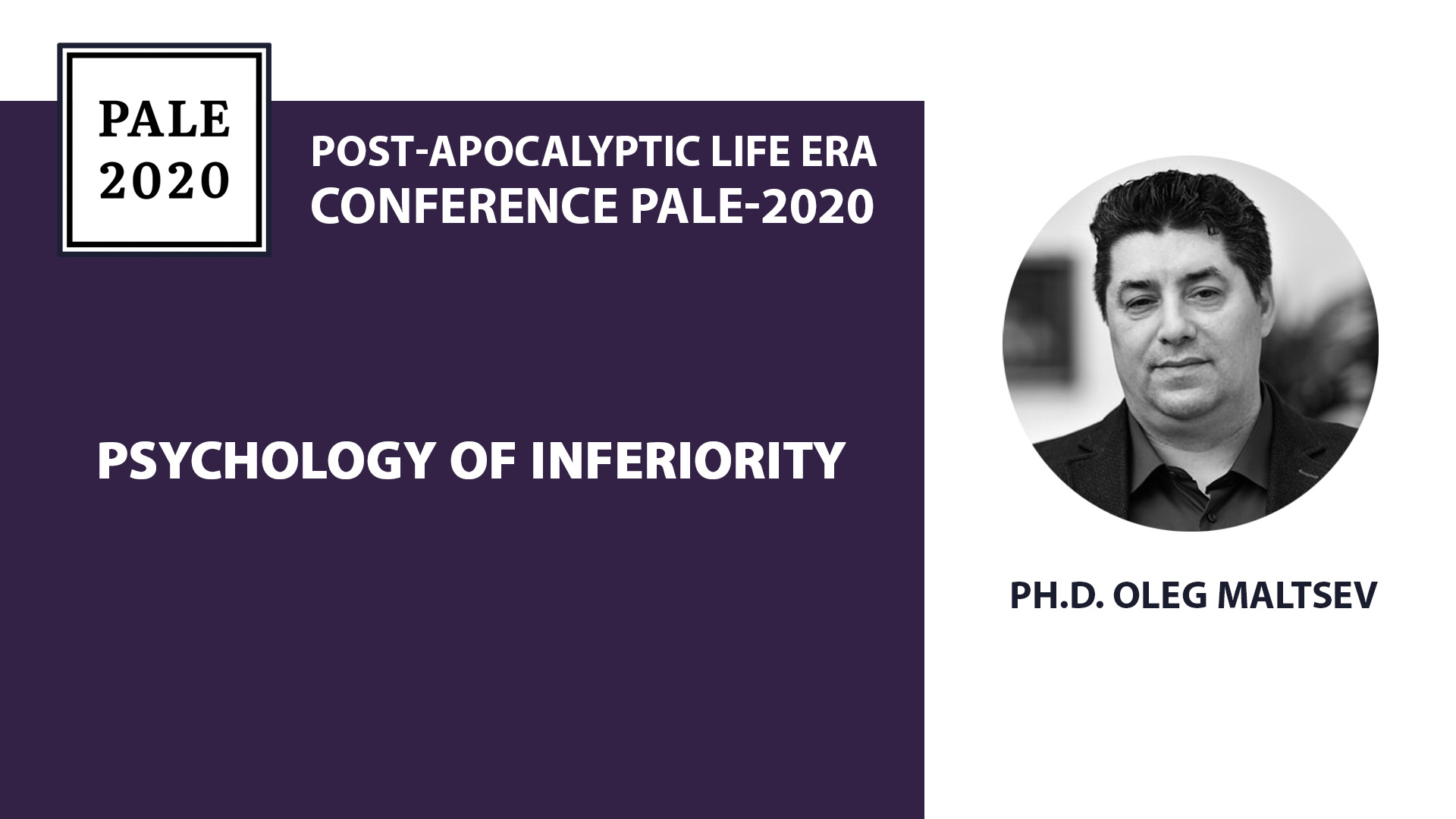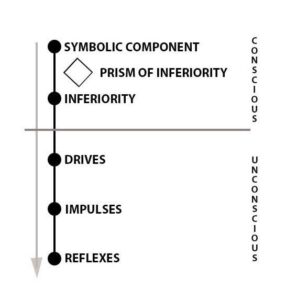Ph.D. Oleg Maltsev. Psychology of Inferiority

Modern academic psychological science is founded on three grandees, such as Leopold Zondi, Sigmund Freud, and Carl Gustav Jung, each of whom investigated and contributed to a certain area of depth psychology. Correspondingly, Sigmund Freud looked into reflex (his research category), instinct (complex instinctive behaviors as a psychological category) was studied by Carl Gustav Jung drives by Leopold Sondi. All three of them had a long scientific journey and we are indebted to them with all we have now in modern academic science. Nevertheless, each of the grandees did as much as he could in a lifetime; certainly, there are things to develop further. After they passed away, academic psychology came to a standstill, and the next step in psychology is long overdue.
Sigmund Freud, Carl Gustav Jung, and Leopold Sondi extensively described the three levels mentioned earlier of human reactions and the relationship of a human with an outer world. However, hardly anybody is interested in his reflexes, instincts, or motives – an individual is more interested in why his life is the way it is. Many would have chosen to live a better, different life, but people genuinely do not answer some questions. Circumstances of today require psychology of inferiority to be a central subject of research; therefore, I started looking into it as a new research category in depth psychology. The pandemic, like any extreme situation, would expos the inferiority of people. Why people behaved the way they did during the pandemic? All in all, we see nothing but reflex as a reaction (at least in Europe as I saw it with my own eyes). What is surprising that people on the governmental level (presidents, prime ministers, and other elected officials) reacted in the same way, even though one would expect a response on a different level of the psyche. This paper is not about the structure of the human psyche, and for illustrative purposes, it is supposed as an “antenna,” which has a diapason. The reflexes are situated at the bottom of it, and symbolic component on the top. Please see a schematic depiction of levels such as the reflex, instinct, drives, inferiority prism and symbol.

As classified in traditional depth psychology, the unconscious part ends on the level of drives, as depicted in the scheme. It is a certain boundary between conscious and unconscious. The question is on what level does a person make a choice? According to Leopold Sondi, “choices we make shape our destiny.” However, most of the time individuals’ choice is unconscious, which means that something preceded it. Therefore, Sondi’s psychological category is not related to a “choice” but “drives.” One’s motives, structure, and configuration, from Sondi’s viewpoint, determine a person’s unconscious choice. A psychological category such as “instinct” developed by Carl Gustav Jung is a complex pattern model of behavior, but it is unconscious too. When it comes to reflexes, it should be understood that it is looked at only as an assessment of a triggered reflex (i.e., post-processing of what has already happened and not what is going happen). Accordingly, the reflex is also triggered unconsciously at the automatic level. Thus, when we speak about a consciously made life choice, it is attainable only at the symbol level. According to the structure of human memory, one of its components is a prototype. The prototype structure could be imagined as a data bank, which is the source of a person’s foundation of moral conduct. It is a natural mechanism to start searching for answers if you do not know how to deal with a particular thing. At this point, he turns to this “data bank” and “extracts” the necessary knowledge. One of the prototype blocks’ level is the “current reasonable model of authorities” it has five authority figures that automatically generate skills, and an individual uses them without a second thought about it. From one side, the “current reasonable model of authorities” is symbolism in its purest form, because these figures become symbols. For instance, it is quite frequent when people bring to mind relevant leading/famous/infamous figures from near history, that are perceived as symbols already while reflecting on nationalities. For example, when people think of Russians, they usually remember Stalin, Lenin, Marx, Engels and others; when it is about Americans —the president of the United States — the status itself is perceived as a symbol and not the person itself (same applies to the previous example). This is because it is a temporary status (usually, presidents are elected for one or several terms). Another interesting example is Germany, Angela Merkel has been on her post for almost 15 years by now, but she is not a symbol of Germany (yet).
It should be pointed out that not only can a person become a symbol, but it could also be an idea. What is important is that the symbolic component guides the choice of a man. If something is wrong with his motives, instincts and reflexes, then the problem lies in the prototypological block of memory (inconsistent “current reasonable model of authorities”). It is responsible for making it possible to solve tasks and the way of life that one has at the moment. When something is wrong with a person (and it is visible), it can be concluded that there is an issue with the “choice” on the level of drives. In principle, such a category is not possible on that level; thus, it unconsciously takes place. When one fails in something or incapable of achieving the task he set before himself (from a memory perspective), the problem is only in the prototypological block.
Note that the symbol generates not only things that evoke the joy, but also hatred. For example, Hitler became a symbol of evil. The mechanism of the symbol’s origin does not matter; a symbol has an effect on human life in any case. If this had not been the case, there would have been no mechanism for the transmission of evil, which is ubiquitous. It works according to a straightforward formula: “What has been effectively used against me, will definitely work on others.” Simply speaking, if a person was frequently beaten by a stick, he will do the same with somebody else (he will replicate this “evil”). This happens due to the fact that the symbol is always in the foundation of anything; therefore, choices are symbolic as well as further models of human behavior are subject to this choice. Coming back to the psychological category of inferiority, it is essential to note that it is the prism of the symbol’s refraction. It means that the symbolic system differs from person to person. Consequently, it will work individually, depending on the degree of inferiority and other accompanying factors. For example, let us say that two people have the same personality-symbol, but their behavior would be entirely different because of the unique exploitation of the symbolic component. Some people might understand the symbol uniformly, and the models of their behavior would be more or less similar, but each person will be unique anyhow because it is impossible to understand the symbol equally in every sense. Unfortunately, modern psychology does not look into such a category as inferiority. The average person does not investigate his inferiority; it is always automatic, unconscious, correspondingly he is never in charge of it and cannot use it to his own advantage. Very frequently, it plays a cruel joke with a person, and his life decisions led to fatal consequences.
Ph.D. Oleg Maltsev
Author, researcher, criminologist, psychologist. Academician of Ukrainian Academy of Sciences. Founder and director of The Memory Institute, head of Expeditionary Corps. He is an author of numerous books in areas such as applied history, sociology, depth psychology, philosophy, criminalistics, criminology.




